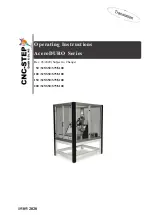
Bridges that cannot interpret Ethernet CFM messages forward them as normal data frames. All Ethernet CFM
messages are confined to a maintenance domain and to an MA. Three types of messages are supported:
•
Continuity Check
•
Linktrace
•
Loopback
Continuity Check Messages
Ethernet CFM continuity check messages (CCMs) are multicast heartbeat messages exchanged periodically
among MEPs. They allow MEPs to discover other MEPs within a domain. CCMs are confined to a domain.
CFM CCMs have the following characteristics:
•
Transmitted at a periodic interval by MEPs. The minimum interval is 3.3 milliseconds (ms).
•
Terminated by remote MEPs at the same maintenance level.
•
Unidirectional and do not solicit a response.
•
Indicate the status of the interface on which the MEP is configured.
Linktrace Messages
Ethernet CFM linktrace messages (LTMs) are multicast frames that a MEP transmits, at the request of an
administrator, to track the path (hop-by-hop) to a destination MEP. They are similar to Layer 3 traceroute
messages. LTMs allow the transmitting node to discover vital connectivity data about the path. LTMs are
intercepted by maintenance points along the path and processed, transmitted, or dropped. At each hop where
there is a maintenance point at the same level, a linktrace message reply (LTR) is transmitted back to the
originating MEP. For each visible MIP, linktrace messages indicate ingress action, relay action, and egress
action.
Linktrace messages include the destination MAC address, VLAN, and maintenance domain and they have
Time To Live (TTL) to limit propagation within the network. They can be generated on demand using the
CLI. LTMs are multicast and LTRs are unicast.
Loopback Messages
Ethernet CFM loopback messages (LBMs) are unicast frames that a MEP transmits, at the request of an
administrator, to verify connectivity to a particular maintenance point. A reply to a loopback message (LBR)
indicates whether a destination is reachable but does not allow hop-by-hop discovery of the path. A loopback
message is similar in concept to an Internet Control Message Protocol (ICMP) Echo (ping) message.
Because LBMs are unicast, they are forwarded like normal data frames except with the maintenance level
restriction. If the outgoing port is known in the bridge
’
s forwarding database and allows Ethernet CFM frames
at the message
’
s maintenance level to pass through, the frame is sent out on that port. If the outgoing port is
unknown, the message is broadcast on all ports in that domain.
An Ethernet CFM LBM can be generated on demand using the CLI. The source of a loopback message must
be a MEP. Both Ethernet CFM LBMs and LBRs are unicast, and LBMs specify the destination MAC address
or MEP identifier (MPID), VLAN, and maintenance domain.
Carrier Ethernet Configuration Guide (Cisco ASR 920 Series)
251
Configuring Ethernet CFM
Ethernet CFM Messages
















































